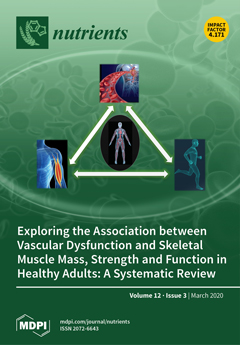Poor diet quality and obesity, especially abdominal obesity, have been associated with systemic inflammation. The neutrophil-to-lymphocyte Ratio (NLR) is an available and inexpensive inflammation biomarker. The aim of the present study was to determine the association of dietary patterns and obesity with an inflammatory state. A group of 1747 Spanish noninstitutionalized older adults individuals were included, and a food-frequency questionnaire was applied. The Global Food Score (GFS) and Healthy Eating Index for Spanish population (SHEI) were calculated. Weight, height and waist (WC) and hip circumferences were measured, and BMI, waist-to-height ratio (WHtR), and waist-to-hip ratio (WHR) determined. In addition, body-fat percentage was measured by bioimpedance. NLR was calculated (NLR ≥ p80: 2.6; 2.8 and 2.4 as inflammatory status in the entire population, men and women, respectively). The men with inflammatory status presented significative higher values of WC, WHtR, WHR, and body-fat percentage (101.82 ± 10.34 cm, 0.61 ± 0.06, 0.98 ± 0.06, and 31.68 ± 5.94%, respectively) than those with better inflammatory status (100.18 ± 10.22 cm, 0.59 ± 0.06, 0.97 ± 0.07, and 30.31 ± 6.16%, respectively). Those males with worse inflammatory state had lower scores for protein foods (OR = 0.898 (0.812–0.993);
p = 0.037). The women with NLR ≥ 2.4 had higher WHtR and WHR (0.62 ± 0.09 and 0.91 ± 0.09) than those with NLR < 2.4 (0.60 ± 0.08 and 0.90 ± 0.08). In multiple linear regression analysis, NLR was positively related with WHtR and negatively related with SHEI score (β = 0.224 ± 0.094;
R2 = 0.060;
p < 0.05 and β = −0.218 ± 0.101;
R2 = 0.061;
p < 0.05), adjusting by sex, age, marital status, education level, smoking, hours of sleeping and inflammatory diseases. In women, the higher the SHEI and GFS scores were and the better meeting the aims of cereal and vegetable servings, the less the odds of inflammatory status (OR = 0.970 (0.948–0.992);
p = 0.008; OR = 0.963 (0.932–0.995);
p = 0.024; OR = 0.818 (0.688–0.974);
p = 0.024 and OR = 0.829 (0.730–0.942);
p = 0.004, respectively). WHtR and quality of diet is related to the inflammation status in older adults regardless to the sex.
Full article






